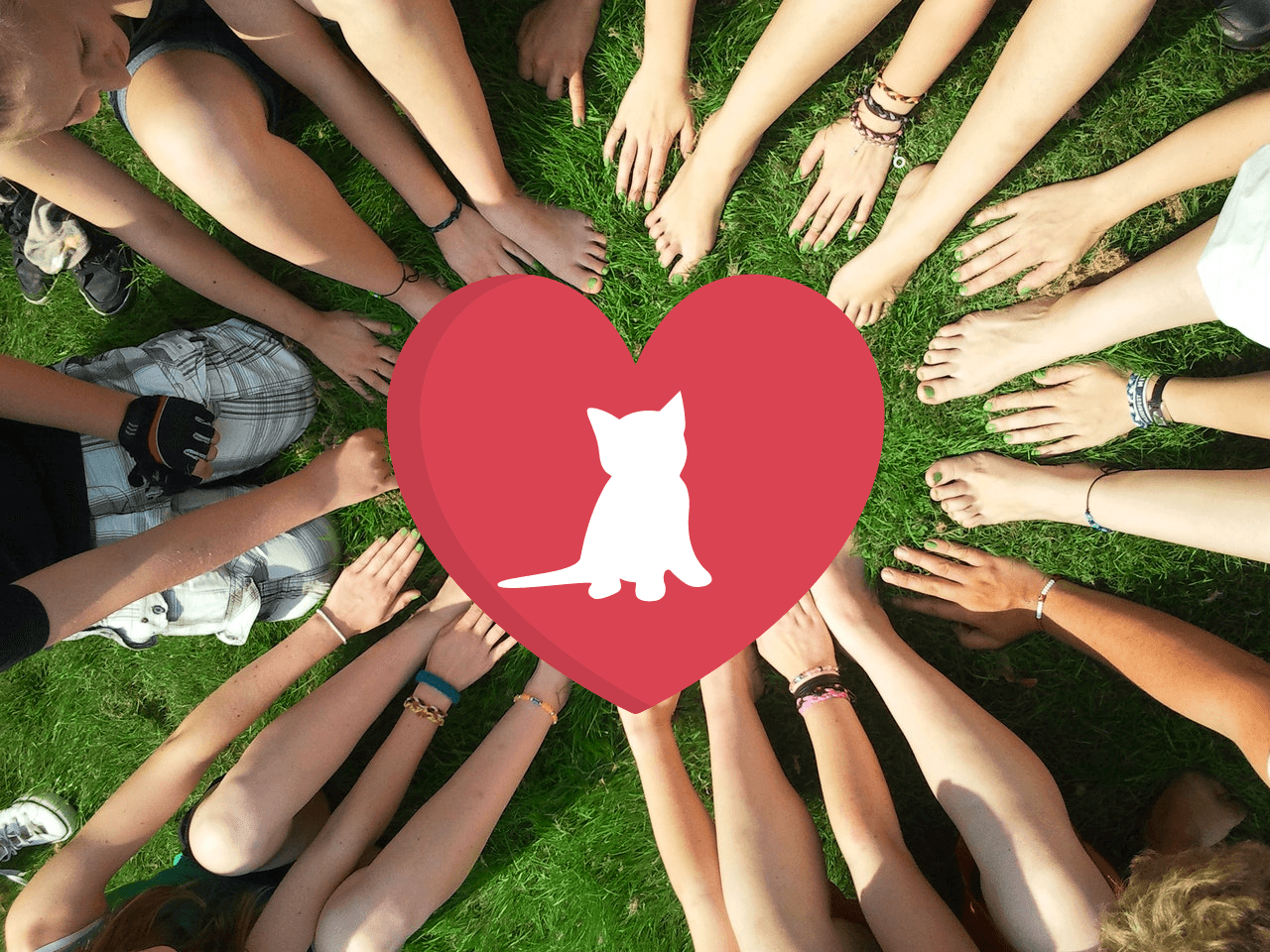Your cart is currently empty!
Tag: kitten training
-

7 Additional Commands
Introduction
As your dynamic evolves, you will see that often commands between both parties can be initiated not only by the dominant part, but also by the Kitten in question. Commands and their reactions are a non verbal way to communicate. While meowing, purring and head rubbing help you show your dominant counterpart that you want something, you can help him/her also by enacting commands without initial commandment.
These are 7 additional commands, that can be used to train your kitten, or help your partner understand you better within play.
7 Additional Commands
(1) Belly Rub
Similar to paws up, the kitten uses their paws to expose the belly and stretches it out for a good belly rub. Make sure the belly is fully exposed or any fabric on the belly is stretched to a smooth surface to ensure a good rub.
(2) Expose
This is an extension to the “Tail up” command. The kitten now additinally uses one paw to lift up their tail and expose their private parts. This can be used in a lot of ways.
(3) Knead
This is a “paws up” extension. Kneading for a kitten means, that it is using using their paws to knead at whatever their touching in this very moment or can touch without further preparations. That could be their Partner, the bed, pillow, blanket or a stuffie. This command can be used to help a kitten calm down, relax or get their thoughts off of something. It might also be a good ritual before bedtime.
(4) Companion
This is a combined command of “sit pretty” and “paws up” in a location pointed out next to the dominant partner. The kitten will first go to the dedicated right or left side of their Owners legs (either the pointed out side, or the side it’s trained on or the side in reach) and then “sit pretty” with an immediately following “paws up” with the paws either wrapped around the dominant’s leg if standing or resting on the knee if sitting.
(5) Hunt
This is a lower executed version of “crawl”. The kitten positions itself lower to the ground and crawls low and slowly in a hunting mode to catch or fetch the toy the dominant has presented them.
(6) Tail Down
This is the command that indicates that the kitten should stay where it is right now, until it is released via the “come”, “companion” or a similar command. While the command lasts, the kitten usually sits or lies down.
(7) Groom
This command is either a combination of “sit pretty” and “ears down” or an addition to the “companion” command. With their head tilted down, the kitten is in an ideal position to be groomed or pet. The dominant now can grab a brush, or a soft towel to wipe or groom the kitten. This can also be used to change accessories on the kitten or indicate, that a full or partial change of clothing will/should follow.
-

7 Basic Commands
Introduction
Welcome to our Kitten play basic training. In this course you will learn the seven basic commands and positionings. Have fun!
Basic Commands and positionings in Kitten Play.
We believe a trained kitten is a happy kitten. A trained kitten is able to respond to cues or commands, or the performance of actions not necessarily natural to the kitten.
Our surveys show that kitten training helps immensely to achieve the headspace called “kittenspace”, which can be one of the greatest feelings for a person identifying as a kitten or a pet in general.
The following seven command are the basic commands each kitten should learn in the beginning.
7 Basic Commands
(1) Sit pretty
Sitting upright on legs tucked under, knees slightly spread apart (about shoulder width) with paws (hands) between open legs and paws touching the ground, head facing forward, chest up and out (as if proud to be seen). This is a classic kitten pose and used as a base for many other command words.
(2) Paws up
From any position, this indicates kitten no longer gets the use of their fingers by making a paw shape with their hand by tucking their fingers under the palm on their hand. Arms should be bent up with paws up on display in a begging type position. This can be used as a position for rope bondage, applying cuffs or restraints, showcasing, encouraging kitten play head space, or to encourage them to use their paws when with their Owner at that moment.
(3) Tail up
This is a submissive position with the face to the floor, nose touching, and hands out above the head, palms down (unless in “paws up” mode), forearms touching the ground. However, their knees should be on the ground, slightly apart at about shoulder width, with the butt high up in the air.
(4) Belly Up
What it sounds like…kitten lays on their back with legs bent and lifted off the floor. You may want them to cross their lower legs as an addition. Paws should be lifted off the ground and up in the air with the “paws up” position. This position is one that encourages fun for kitten. It’s their playtime starter position. From here, you can use this for tickling whether by hand or ticklish feather toys they can try and bat at, to using this position to apply restraints on both wrists and ankles, to belly petting, to giving them some of their favorite toys to play with.
(5) Ears Down
This command tells kitten to lean their head down. Whether simply for the idea of submission or to apply a collar to lock it in the back, this can be a simple useful command word.
(6) Crawl
A kitten version of “come”, this position tells the kitten to crawl forward to Owner on hands and knees. Owners can use this to their advantage in asking the kitten to either crawl sexily or slowly.
(7) Show Kitty
This command is an extension of “sit pretty” and “paws up” combined. The only difference is the kitten is extended upright on their knees. A good position for when Owner wants a basic inspection of their kitten, wants them to beg, to clip on a leash for leash training, or simply to adore the kittens form. “Show kitty” is a position of pride for the kitten, showing off their beauty, grace, and willingness to be a pet. It has less functional purpose, but is a position of adoration the Owner can give to his pet by giving them their full attention. It’s a good position for an Owner to call right before a scene or other scheduled playtime.
-

Easy types of punishment
Whenever a living being has been trained, punishment to correct bad behavior has traditionally been a way to help the caregiver, master, trainer, or dom establish authority and encourage learning. Training a kitten also requires punishment. Not all kittens are “certified good kittens.” Some are bratty and test boundaries, others may not listen, and some are wild and need taming. Every kitten has its own character.
Punishment can also be a bonding experience. This is because punishment requires trust and challenges boundaries. Some kittens may enjoy being testy and provoking punishments, while others may try to avoid them. Punishment, when consensual, becomes part of the dynamic and play. Ensure that both parties consent to the situation.
Preparing for Punishment
Before incorporating punishment into training, follow these steps:
- Communicate About Punishments
Discuss possible punishments and ensure they are compatible with the kitten’s physical and mental health. Establish soft limits (conditional boundaries) and hard limits (absolute boundaries). Check in with each other about any potential mental triggers. Open communication builds trust and ensures safety. - Establish Safewords
Agree on a safeword for each party. Safewords should be easy to say and unrelated to the scenario. Test memory by repeating them before play. If a safeword is used, immediately stop, check on each other, and discuss what went wrong. - Prepare Tools and Supplies
Ensure any items used for punishment are clean, safe, and well-maintained. For example, replace pet shampoo with human shampoo in a pet-themed bottle. Avoid using anything unsafe for the human body.
Types of Punishment
- Water Spray
Use a spray bottle with cold water to correct small missteps. Spray without warning and follow with a firm command like “No.” Ensure the kitten associates the action with the correction. - Stay and Hold
Have the kitten sit in a designated spot for 1–3 minutes, away from toys. Optionally, use a gag or have them hold a light object in their mouth. If the object is dropped, restart the timer. Repeat the task afterward and praise compliance. - Slap
Correct behavior with a slap on safe areas such as the buttocks, upper back, or outer legs. Use a soft whip if preferred. Practice safe technique beforehand to avoid injury. Follow with task repetition and praise. - Kneeling
Have the kitten kneel for 30 seconds to 3 minutes. For added discomfort, spread rice under a towel and have them kneel on it. Avoid direct contact with rice. Tailor the punishment to the kitten’s tolerance and follow with repetition and praise. - Denial
Temporarily remove a favorite item such as a toy, blanket, or game. Explain why and have the kitten affirm understanding. Return the item once the task is completed correctly, and end with praise. - Bathing
Bathe the kitten as a form of correction. Be gentle in sensitive areas but firm in safe zones like the upper back, buttocks, and outer legs. Follow with repetition of the task at the next training session and offer praise.
After Punishment
After a punishment, ensure the kitten understands the reason behind it by asking a specific yes/no question. Reinforce positive behavior with affection, such as petting or cuddling.
If the kitten misbehaves again, repeat the punishment. Always provide aftercare, which could include a blanket, hugs, or a check-in. Observe their mental state to ensure they are not emotionally hurt.
Clean your supplies, plan the next session, and maintain open communication about any changes.
Notes on Limits
- Soft Limits: Hesitations that may be conditional upon trust or safety. Handle delicately to avoid escalation to hard limits.
- Hard Limits: Absolute boundaries. Violating these can damage trust and end the relationship or dynamic.
- Communicate About Punishments
-

What is Kitten Training?
Kitten training is the practice of engaging in activities and rituals where one person role-plays as a “Kitten,” taking a submissive role, while another person takes on the dominant role of the “Owner.” Both parties derive pleasure or erotic enjoyment from the dynamics of domination and submission. A person who switches between roles is known as a “Switch.”
The Process of Kitten Training
Kitten training typically involves:
- Adopting the mindset of a Kitten: The submissive partner role-plays as a Kitten, often wearing Kitten gear.
- Learning preferences: The Kitten learns the Owner’s preferences for responses and behaviors during sessions.
- Mental and physical conditioning: The training can involve activities that range from mental exercises to physical interactions, depending on the preferences of both parties.
Kitten training can be a one-time experience to add variety to a relationship or an ongoing practice tailored to the couple’s needs.

Activities in Kitten Training
The training often includes:
- Learning positions, mannerisms, and activities that enhance the experience for both parties.
- Practicing commands and behaviors that align with the dynamics of the relationship.
- Immersing fully in the role, which may involve staying on all fours, responding to orders, and adapting to the Kitten persona.
Physical interaction is optional and depends on the preferences of those involved. Communication is key to ensuring mutual satisfaction and respect.

Tailoring Kitten Play to Your Relationship
Each relationship is unique, and the dynamics of Kitten play can vary widely. What works in one partnership might not apply to another. Training involves learning how to meet your partner’s expectations and adjusting to their style.
For some, Kitten play is about light-hearted interactions and cuddling, while others might enjoy a deeper exchange of power. The key is open communication to establish shared goals and boundaries.

Starting Your Journey
If you’re considering Kitten training, take time to reflect on your desires and communicate openly with your partner. Joining communities of like-minded individuals can help you learn more and connect with others who share similar interests.
Final Thoughts
Before engaging in Kitten training, ensure both partners have a clear understanding of what the practice entails and how it fits into your relationship. Mutual respect, shared dreams, and communication are the foundation of a fulfilling experience.
Call to Action
What are your thoughts on Kitten training? Is it something you’d like to explore in your relationship?
Let us know in the comments, or join our community on Discord to learn more about Kitten play, Kitten training, and Kitten gear in a safe and supportive environment!

